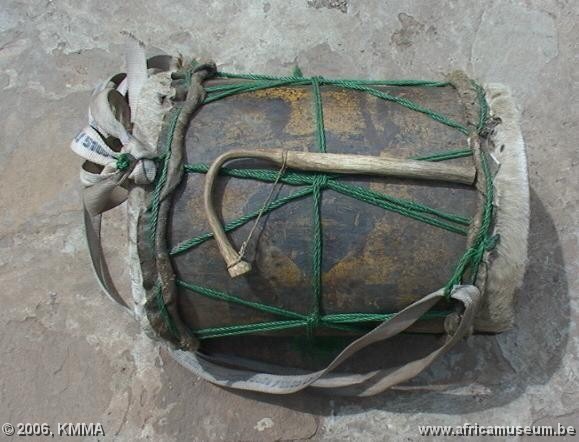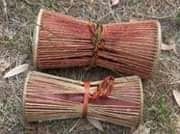The Dagombas are a large dominant ethnic group living in the Northern Region of Ghana. Dagbon kingdom was established centuries ago and dominated an area near the Dagomba capital of Yendi. They speak Dagbani (Dagbane), a language of the Gur branch of the Niger-Congo language family. Subject to the Dagombas are a number of people and parts of other ethnic groups, among them are the Konkombas and the Chakosis. The homeland of the Dagbambas is called Dagbon and covers about 20,000 km2 in area with a large total population.
Indeed I cannot talk about the dagbon kingdom, without acknowledging the Ya-Na, the overlord of the Dagbon Traditional Kingdom is the Ya- Na, whose court and administrative capital is at Yendi. The seat of the Ya Na literally translated as King of Absolute Power, is a collection of cow skins. Thus when we talk of the political history of Dagbon, we often refer to it as the Yendi Skin and not the Crown or Throne.
The Dagombas make their living primarily through farming, their chief crops being sorghum, millet, corn (maize), yams, and peanuts (groundnuts). Most farm work is done by men; women often assist in harvesting. Dwarf shorthorn cattle, sheep, goats and fowls are kept. They are not only skillful farmers, but also are fishermen and hunters, and some even engage in administrative and managerial works. Dagomba craftsmen are skilled tailors, traders, and makers of ropes and mats. Some also specialize as blacksmiths and butchers.

Then comes the traditional wear found in the Northern Region. Fugu; the traditional costume of the indigenes of dagbon can’t be left out when delving into the kingdom of dagbon.
Some call it “Fugu”, others ‘Batakari’, and some others, the word “Fugu” comes from the Mossi Language which literallymeans cloth. It is made up of strips of cloths woven on traditional looms to form a variety of loose garments. The Smock is the traditional dress for men in the Dagomba culture.
Traditionally, the smock is seen as a war dress, it is also the dress code for festivals such as, the Damba and the Bugum festival (Choggu Fire Festival), the smock, is also the costume for the Takai dance.
Takai is the most prestigious Group Dance of the Dagomba people. As History reveals, Takai is linked to the institution of chieftaincy and the polity of Dagbon. The story of the dance’s origin connects to the earliest period of kingdom’s formation, as well as an important episode in Dagbon’s relationships with the neighboring Mossi people. Strongly associated with warriors and princes, Takai is a site for the cultural construction of gender identity and its physical enactment in public performance.
The entire performance usually takes place in a circular formation with drummers in the center in spirited but controlled and dignified manner. Dancers hold metal rods in their right hands, each dancer at a regular interval, strikes his metal rod alternatively against that of the person in front of him and then turns around. As they turn about, the dancers costumes flair out gorgeously and their fancy knee high boots call attention to steps that are reminiscent of tap dancing or clogging. The sharp sound of the strike contributes to the overall percussive music.
The music and dance phrases have motion toward and arrival on the moment when dancers hit their rods together. Because this cadential is so well known among Dagomba musicians, sometimes they enjoy avoiding the normal moment of strike, choosing instead to play a split second after the cadence point in a sort of ironic musical in-joke.
Takai is a royal dance of the Dagbamba chiefs and princes. It is performed on festive occasions such as the annual Damba festival, political rallies, and durbar of chiefs. Danced only by men, Takai movements involve pivot turns, torso swings, and stamping to the rhythm of the lunga and gungon, the only drums that are used in this dance.
The joy of performance comes from the way the drummers and dancers meet at each cadence point in the recycling musical theme.

The Gungon drum

The Lunga drum
By Yahaya Labecca
REFERENCE
https://ghanagoods.co.uk/category/ghana/ghana-culture-history/dagomba/
http://music.africamuseum.be/instruments/pic/ghana/frafra/gungon-nu2.jpg